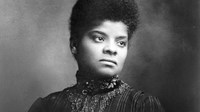- Belmont-Paul Women's Equality National Monument (117)
- Women's Rights National Historical Park (63)
- National Mall and Memorial Parks (56)
- Pennsylvania Avenue (32)
- The White House and President's Park (24)
- Frederick Douglass National Historic Site (13)
- Reconstruction Era National Historical Park (8)
- Mary McLeod Bethune Council House National Historic Site (7)
- National Capital Parks-East (4)
- Show More ...
- National Register of Historic Places Program (2)
- Network to Freedom (2)
- Cultural Resources Geographic Information Systems Facility (1)
- Cultural Resources Programs (1)
- Historic American Buildings Survey (1)
- National Historic Landmarks Program (1)
- Natural Resource Stewardship and Science Directorate (1)
- Park History Program (1)
Showing 118 results for BEPA ...
- Type: Place

The 44-foot high Peace Monument stands in the circle west of the U.S. Capitol at Pennsylvania Avenue and First Street, NW. Inscribed "In memory of the officers, seamen and marines of the United States Navy who fell in defense of the Union and liberty of their country, 1861-1865," this sculptural group has also been called the Naval Monument.
- Type: Person

In 1921, Otero-Warren ran for federal office, campaigning to be the Republican Party nominee for New Mexico to the US House of Representatives. She won the nomination, but lost the election by less than nine percent. She remained politically and socially active, and served as the Chairman of New Mexico’s Board of Health; an executive board member of the American Red Cross; and director of an adult literacy program in New Mexico for the Works Projects Administration.
- Type: Article

When Carrie Lane Chapman Catt was 13-years-old and living in rural Charles City, Iowa, she witnessed something that would help to decide the course of her life. Her family was politically active and on Election Day in 1872, Carrie’s father and some of the male hired help were getting ready to head into town to vote. She asked her mother why she wasn’t getting dressed to go too. Her parents laughingly explained to their daughter that women couldn’t vote.
- Type: Article

These articles were originally published by the Women’s Suffrage Centennial Commission (WSCC) as a part of the WSCC blog, The Suff Buffs. The Women's Suffrage Centennial Commission was created by Congress to commemorate 100 years of the 19th Amendment throughout 2020 and to ensure the untold stories of women’s battle for the ballot continue to inspire Americans for the next 100 years. In collaboration with the WSCC, the NPS is the forever home of these articles
- Type: Article

What actions should you take when believe something needs to change? In this learning activity designed for sixth-eighth grades, students examine a flier created by the National American Woman Suffrage Association that lists six reasons that women should be enfranchised across the country by amending the U.S. Constitution. They will analyze the arguments presented by the suffragists. Extend the lesson by creating your own flier.
- Type: Article

How can popular culture be used to advocate for change? In this learning activity for sixth-eighth grade, students examine a suffrage illustration modeled on a popular cartoon circulated during Teddy Roosevelt's re-election campaign. They will analyze the use of cultural touchstones to change public perception about an issue and evaluate when they have been influenced by popular culture.
- Type: Article

How have signs and banners been used for change? In this learning activity designed for fifth grade, students examine a suffrage banner and compare it to signs used by other protest movements. They analyze how words and slogans have been used as strategies in the history of protest and imagine how they can take a stand in their everyday lives.
- Type: Article

How does identity shape our interactions with others? In this learning activity designed for fifth and sixth grade, students examine three photographs of women arrested for protesting for the right to vote. Through discussion, students will identify with different people from history and recognize that people may interact in complex ways.
- Type: Article

Have you ever spoken out when you saw someone mistreated? This learning activity designed for fifth graders uses a photograph of Mary Winsor protesting against the imprisonment of suffrage protesters to spark discussion about the responsibility to speak out when you believe something is wrong and needs to change.
- Type: Article

When have you needed courage? In this learning activity for fifth grade, students explore questions about when and how to take a stand in their everyday lives. Using photographs of Lucy Burns, co-founder of the National Woman's Party and the woman who spent more time in prison than any other American suffragist, students engage with questions about the courage needed to speak out.
- Type: Article

How can art be used to change people's minds? What happens when we leave someone out of the picture? In this learning activity, students evaluate the political cartoons of suffragist Nina Allender to discover how women are represented in her art, and who is left out. Then they will create their own artwork to build understanding, respect, and connection.
- Type: Article

How have you responded when you have been teased or ridiculed? In this learning activity designed for sixth-eighth grade, students will examine four anti-suffrage postcards from the early 20th century and analyze how women and men are represented. They will make connections with the way people may be characterized today while learning to exchange ideas and beliefs in an open-minded way.
- Type: Article

Women in the suffrage movement had multiple items they wore that identified them as suffragists and supporters of the movement. Not only would they wear these items while they were protesting or picketing, but they would wear them to meetings and out in public settings. This activity designed for fifth grade students uses a historic photograph as a primary source to engage students in a discussion about how we communicate with what we wear.
- Type: Article

When is protest an effective tactic for change? Using two Suffrage in 60 Seconds videos about the National Woman's Party's campaign of picketing the White House, this lesson invites fourth grade students to discuss collective action. What strategies are most effective in convincing others to change their mind?
- Type: Article

Have you ever wondered how to respond when you are told that you cannot do something? Have you seen someone else being excluded or left out? In this learning activity using the Suffrage in 60 Seconds video about Ida B. Wells, students discuss the experience of being excluded unfairly. What responsibility do we have to stand up and speak out when others are excluded or mistreated?
- Type: Article

How do we resolve conflict? What happens when those working for change agree on the goal but not the methods? In this learning activity for 9th-12th grade, students examine tensions in the suffrage movement using essays and a video about the topic. Using what they learn, they will develop conflict resolution strategies.
National History Day: Women's Equality
- Type: Place

In the late 19th and early 20th centuries, the temperance movement, opposing the consumption of alcohol, gained popularity and political power, culminating in the passage of the 18th Amendment, banning alcohol in 1919. This fountain was donated by Henry Cogswell and erected adjacent to the Central Market in 1884. Filled with ice, the water that flowed from this fountain offered a refreshing alternative to the numerous bars and liquor stores nearby, including one on the ground



